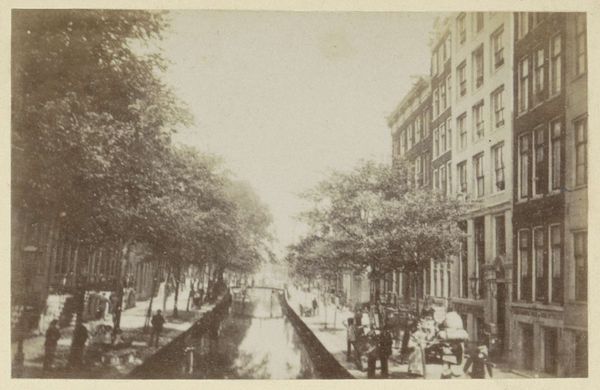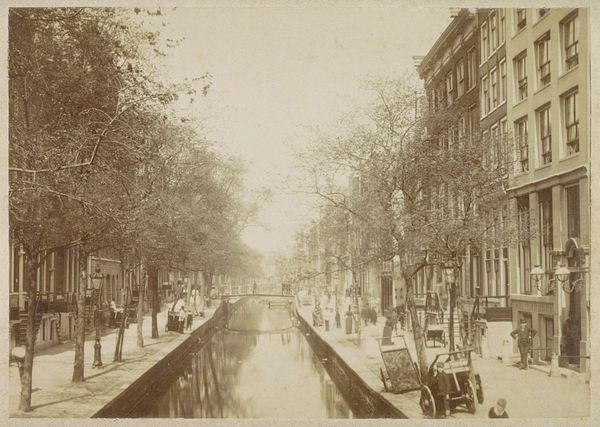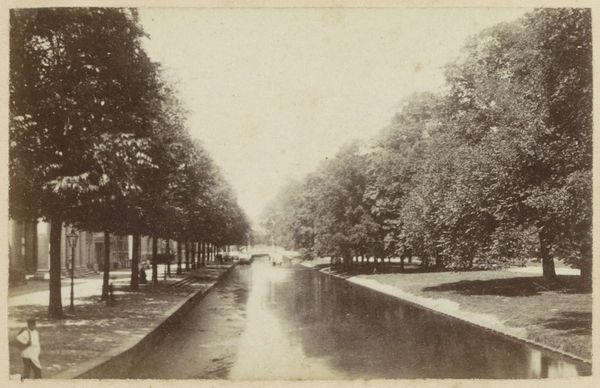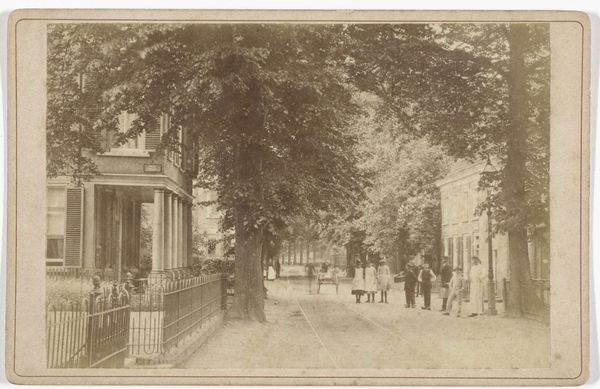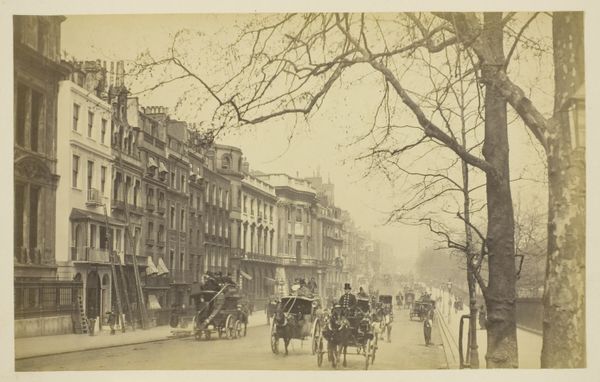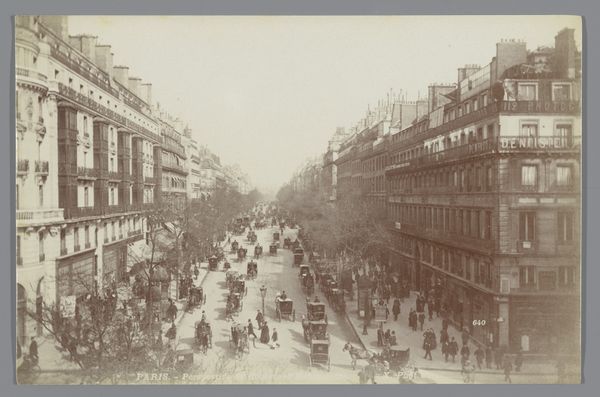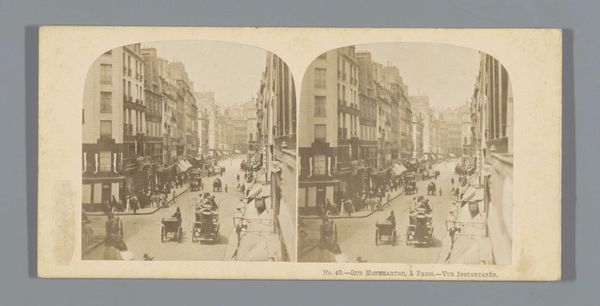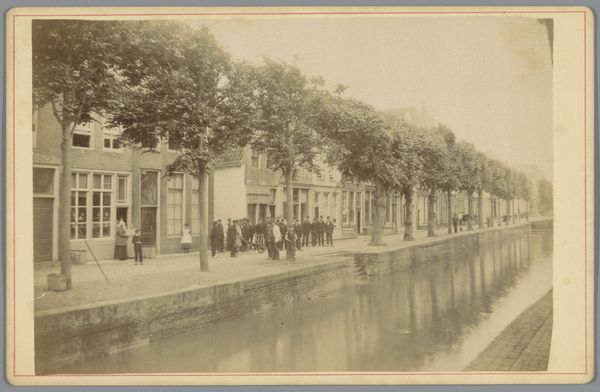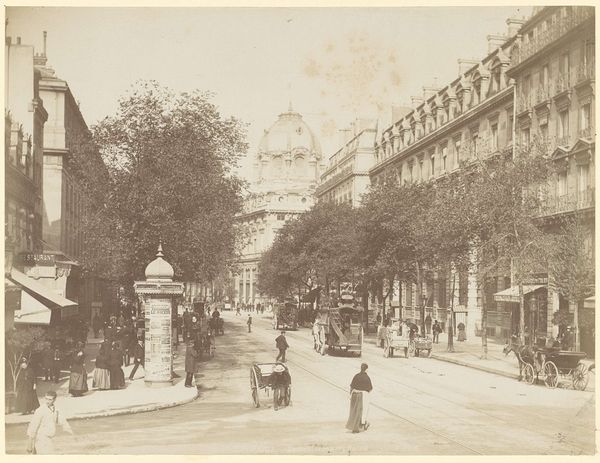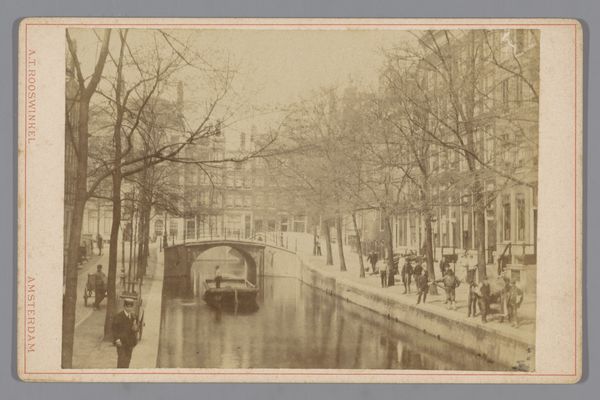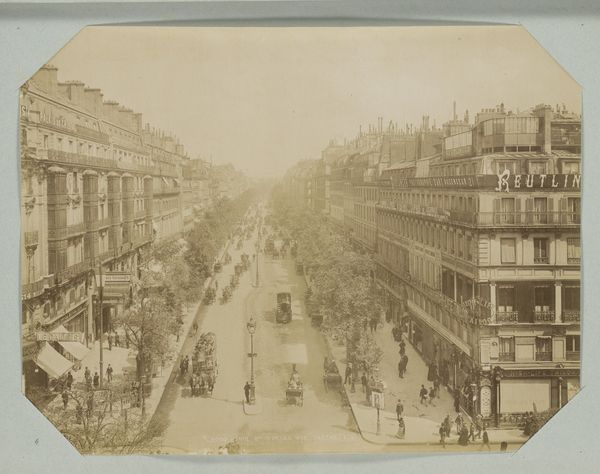
Dimensions: height 107 mm, width 167 mm
Copyright: Rijks Museum: Open Domain
Curator: Here we have a gelatin-silver print by Andries Jager, taken sometime between 1860 and 1890. It's titled "Gezicht op de Oudezijds Achterburgwal in Amsterdam" – a view of the Oudezijds Achterburgwal in Amsterdam. Editor: The photograph possesses such stillness. The light, although diffuse, seems to perfectly capture a moment suspended in time along this waterway. The figures feel posed, despite ostensibly moving through the scene. Curator: Indeed, that feeling speaks to the materials and processes of photography during this period. Gelatin-silver prints, although offering finer detail than earlier processes, still required considerable exposure time. Look at the composition, it really enhances that frozen feeling. The placement of people and objects was clearly staged. Editor: The linear perspective directs my eye powerfully, almost religiously, down the canal toward an ethereal light at the vanishing point. Water as reflection is also very symbolic – evoking themes of self-reflection and the passage of time. I wonder, was Jager intentionally using this technique? Curator: I suspect Jager was also very conscious of framing Amsterdam as this wealthy trading centre, filled with active marketplaces and commercial hubs. A staged and sanitized image would likely promote this better than reality would! Think of the consumer demand for scenic images during this period and its reliance on photography, and we start to understand how lucrative these snapshots would be. Editor: But the reflections, in all their murkiness, offer some degree of uncertainty. Notice how indistinct the faces and forms are; this strikes me as more nuanced than a purely commercial venture. The mirrored cityscape reminds me of the blurred boundaries between memory and reality; which of these realities do we chose to reflect upon? Curator: That said, these gelatin-silver prints would also become extremely common during this period and they quickly entered mass production. These picturesque photographs ended up being commercial cards. I suspect many consumers may not have considered their symbolic properties. Editor: Perhaps. Nevertheless, looking at this now I see a fascinating dialogue between progress and nostalgia, a serene yet subtly melancholic image imbued with layers of meaning beyond mere commerce. Curator: Well, by examining its materials and conditions of production, and exploring some of the work's historical themes, I think we've definitely given listeners some food for thought about Jager’s work here.
Comments
No comments
Be the first to comment and join the conversation on the ultimate creative platform.
